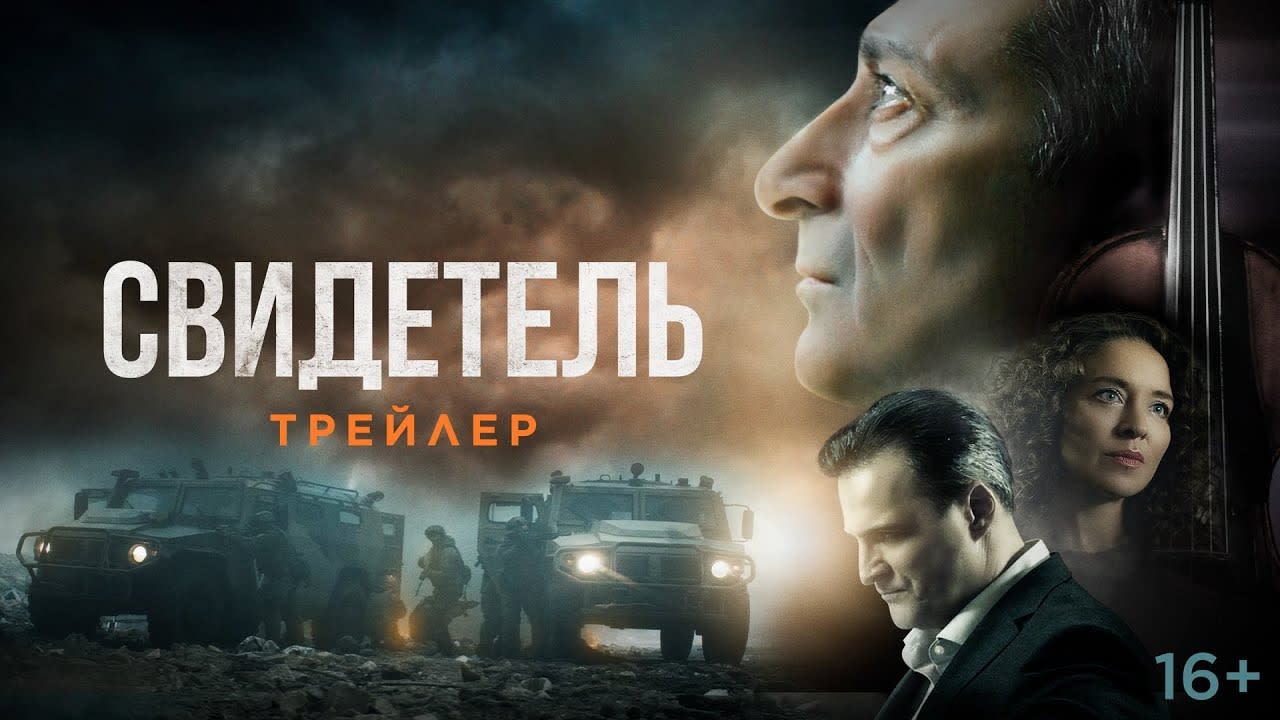With cinema an important medium of propaganda, it was only a matter of time before Russia’s propaganda machine began producing feature films to justify its invasion of Ukraine. Unsurprisingly, The Witness (Svidetel), termed “the first propaganda blockbuster” of the war by Russian opposition publication Novaya Gazeta, is a cynical, cruel mess.
Alasdair McCallum
PhD Candidate, School of Social Sciences
However, it provides valuable insight into Russian propaganda narratives, and, regrettably, aspects of its narrative have found a willing audience among some Western commentators.
In the film, a Belgian violin virtuoso, Daniel Cohen, is invited to perform in Kyiv on the eve of Russia’s invasion by an enigmatic Ukrainian oligarch. When war breaks out, his benefactor abandons him, announces he is “leaving for Israel” (an odd dog whistle for an “anti-Nazi” film), leaving the protagonist stranded in war-torn Kyiv.
The oligarch’s burly head of security (and the film’s main antagonist) happens to be a commander in the Azov Regiment (as will subsequently be discussed, a fixture of Russian propaganda) who abducts Cohen and takes him to an Azov base in a fictional Ukrainian town called Semidveri, where Cohen is tortured and forced to play Nazi anthems on his violin.

The film’s Azov fighters are diabolical to the point of unintentional parody – keeping an engraved portrait of Hitler in their mess hall, and even declaring a toast “to the Holocaust” in one scene. They brutalise local people for speaking Russian, and force local women into sexual slavery, amid other gratuitous scenes of sexual violence and torture.
To inject some pathos, the film depicts the protagonist befriending a local woman and her son, portrayed as Russian-speakers oppressed by Kyiv, who will of course serve as sacrificial lambs for the film’s ugly conclusion.
At the film’s end, the Azov fighters herd all the townspeople into the local train station, which they then destroy with a missile, to create a “provocation” that can be blamed on Russia.
Perhaps most cynically, the film’s end title states: “The Mariupol drama theatre bombing, the Bucha massacre, and the Kramatorsk train station bombing (all notorious Russian war crimes that killed hundreds of Ukrainian civilians) were carried out by Ukraine to discredit Russia in the eyes of the global community. This film is dedicated to the victims of those attacks.”
The Witness can be termed ‘”atrocity propaganda” – propaganda intended to intensify hate for the enemy by arousing visceral anger and disgust. It’s been a staple of Russian propaganda regarding Ukraine, with perhaps the most notorious example being the absurd claim that Ukrainian troops publicly crucified a child in the Donbas war in 2014.
Russia’s Propaganda Movie About The Ukraine War Is A Big Ol’ Box Office Flop: “Set to a budget of 200 million rubles ($2.05m), The Witness has grossed less than 14 million rubles ($143,000)https://t.co/SfghOKkmbm
– ArtsJournal (@ArtsJournalNews) September 5, 2023
The film reflects Russia’s line that its well-documented war crimes are false flags, and that Russia actually shields ordinary Ukrainians from the “Nazis” in their midst.
This false narrative holds that most Ukrainians are simply ontologically confused Russians, held hostage by a radical nationalist minority. This is grossly at odds with the broad liberal nationalism espoused by President Zelensky (himself Jewish) and most Ukrainians.
Uglier still, The Witness evokes the imagery of Hollywood films about the Holocaust, and its clear resemblance to the 2002 masterpiece The Pianist has been noted.
Nonetheless, despite heavy promotion, The Witness has flopped at the Russian box office, perhaps reflecting a preference for escapist entertainment.
The Witness’ focus on the Azov Regiment (recently reformed as the Azov Brigade), which I’ve previously written about in this publication (receiving occasional death threats as a result), is no accident.

It was formed as the Azov Battalion in May 2014 as a volunteer militia of about 80 fighters, including many activists from Ukraine’s far-right fringe, to defend the city of Mariupol from Russian proxies.
In late 2014, Azov was integrated into Ukraine’s National Guard, purged of its extremist members, and turned into a highly professional fighting force, so the Azov Brigade (as it is in 2023) has little in common with the militia formed in 2014.
Experts including Vyacheslav Likachev, Anton Shekhovtsov, Anders Umland and Ivan Gomza, and organisations such as the ADL and even Meta concur that the Azov has de-radicalised and is not substantially linked to neo-Nazism or extremism.
Nonetheless, Russia’s propagandistic claims about Azov are frequently repeated in some Western media, with sources as diverse as conspiracist outlets Grayzone and Consortium News, to the respectable The Intercept and Jacobin‘s Branko Marcetic, to Tucker Carlson and QAnon devotee Marjorie Taylor-Greene, demonstrating an ongoing fixation with Azov.
Groups such as the Democratic Socialists of America (DSA) and nominally feminist, anti-war group Code Pink have invoked Azov as a grounds for denying US support to Ukraine.
In July 2022, Russia massacred more than 50 captured Ukrainian POWs, virtually all Azov fighters, using an explosive charge at Olenivka (Russia’s counter-claim was recently debunked by the UN).
Russia declared Azov a terrorist organization in September 2023, and is currently conducting illegal public show trials of two dozen Azov captives, nearly 40% of whom are women, who are likely to be subjected to torture and long prison sentences.
As Paul Linebarger observed in his seminal 1948 work Psychological Warfare in World War II, “atrocity propaganda begets [real] atrocities”.
The Witness forms just one small link in this chain of constant disinformation that Russia has peddled about “Azov Nazis”.
The Witness is not recommended in any sense. However, it points to the persistence of Russian propaganda, and the role that some Western commentators, whether out of naivete or cynicism, have played in enabling it.








